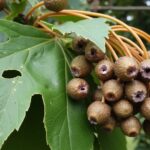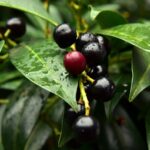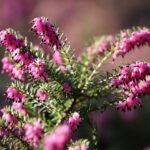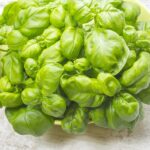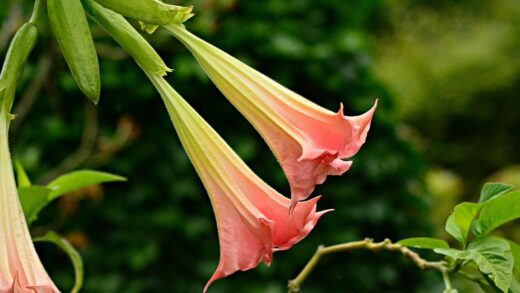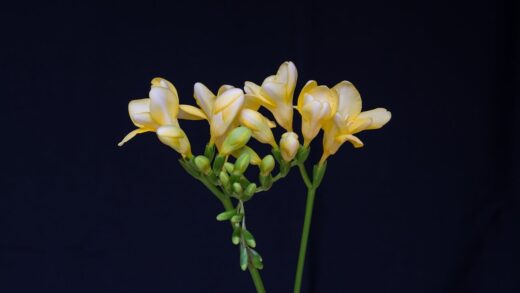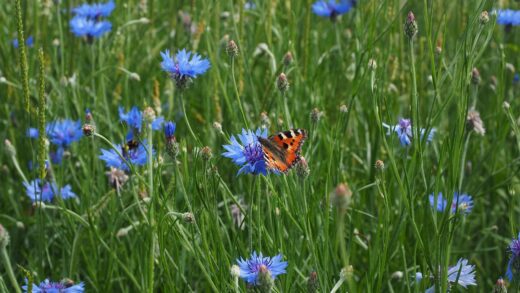Pruning is a horticultural practice that, when done correctly and with a clear purpose, can significantly enhance the health, structure, and productivity of a wild service tree. Unlike many fruit trees that require intensive annual pruning, the wild service tree naturally develops a strong and attractive form, meaning that a minimalist approach is often best. The primary goals of pruning this species are to establish a good framework when the tree is young, to maintain its health and safety when mature, and occasionally to encourage better fruit production. Understanding the principles behind why, when, and how to prune is essential to avoid causing unnecessary damage and to ensure the long-term well-being of this distinguished landscape tree. This article provides a comprehensive guide to pruning, from the foundational principles to specific techniques for trees of all ages.
Principles of pruning for tree health
The fundamental principle of pruning any tree, including the wild service tree, is to have a clear reason for every cut you make. Pruning always creates a wound, and while trees have mechanisms to seal over these wounds, each cut is a point of potential entry for diseases and a source of stress. Therefore, pruning should never be done indiscriminately. The three most common and justifiable reasons for pruning are often referred to as the ‘three Ds’: removing branches that are dead, diseased, or damaged. This type of pruning, known as crown cleaning, can be done at any time of year and is essential for maintaining tree health and safety.
A second key principle is to understand how the tree will respond to being cut. Removing the terminal bud of a branch will stimulate the growth of side buds further down the stem, often resulting in denser growth. Making larger cuts, such as removing entire branches, can stimulate a more vigorous growth response as the tree attempts to replace the lost photosynthetic capacity. For the wild service tree, which should have a natural and open structure, the goal is to make as few cuts as possible to achieve the desired outcome, preserving the tree’s natural form.
The quality of the pruning cut is paramount. Cuts should always be made with sharp, clean tools to create a smooth surface that the tree can heal over more easily. A jagged cut from a blunt tool will damage the surrounding tissues and provide a rough, moist surface that is ideal for fungal spores to colonize. When removing a branch, it is crucial to cut just outside the branch collar—the slightly swollen area where the branch joins the trunk or a larger limb. This collar contains specialized cells that are responsible for closing over the wound, and cutting into it or leaving a long stub will significantly impair the tree’s ability to heal.
Finally, timing is a critical principle. The best time to carry out most structural pruning on a wild service tree is during its dormant season, from late autumn to early spring. Pruning during this period minimizes the stress on the tree as its metabolic activity is low, and the risk of infection from diseases like fire blight is greatly reduced. It also allows the pruner to clearly see the tree’s branching structure without the obstruction of leaves, making it easier to decide which branches to remove.
Formative pruning for young trees
Formative pruning is the process of shaping a young tree during its first few years to establish a strong and well-balanced permanent structure. For a wild service tree, the goal is to develop a single, dominant central leader (the main upward-growing trunk) and a series of well-spaced scaffold branches that will form the main framework of the tree. This early intervention is crucial as it can prevent structural problems, such as weak, narrow-angled branches or competing leaders, that can be difficult or impossible to correct later in the tree’s life.
In the first couple of years after planting, the focus should be on establishing the central leader. If the young tree develops two or more competing upright shoots at the top, one should be selected as the main leader and the others should be removed or shortened. This prevents the formation of a weak, V-shaped crotch at the top of the tree that could be prone to splitting later on. Any branches that are growing at a very narrow angle to the trunk should also be removed, as these also form weak attachments.
As the tree grows, you can begin to select the main scaffold branches. These should be spaced both vertically and radially around the trunk, like spokes on a wheel, to create a balanced structure. Aim to have major branches emerging from the trunk every 30-50 centimeters, avoiding clusters of branches all originating from the same point. Any branches that are crossing or rubbing against each other should be removed, as the friction can create wounds that allow diseases to enter. It is always better to remove the weaker or less well-placed of the two rubbing branches.
It is important to approach formative pruning with a light touch. In any given year, you should not remove more than about a quarter of the tree’s living canopy. Young trees need their leaves to produce the energy required for strong root and trunk development. Over-pruning can stunt the tree’s growth and delay its establishment. The process of formative pruning is best carried out over several years, making a few key cuts each dormant season to gently guide the tree towards its ideal form.
Maintenance pruning for mature specimens
Once a wild service tree has reached maturity and has a well-established structure, it requires very little routine pruning. The focus of maintenance pruning shifts from shaping the tree to preserving its health and structural integrity. The primary task is the regular removal of any dead, diseased, or broken branches. This not only improves the appearance of the tree but also removes potential sources of decay and disease, and eliminates the safety hazard of dead branches falling from the tree.
A mature tree may also benefit from some selective thinning of its canopy. If the crown becomes overly dense, it can reduce light penetration and air circulation to the interior of the tree, which can encourage fungal diseases and lead to the dieback of inner branches. Thinning involves carefully removing a small number of secondary branches throughout the canopy to open it up. This should be done sparingly, removing no more than 10-15% of the foliage in one season, and focusing on removing branches that are crossing, growing back towards the center of the tree, or otherwise poorly positioned.
Another aspect of maintenance pruning can be crown raising, which involves removing the lowest branches of the tree. This is often done for practical reasons, such as to provide clearance for people to walk under the tree, for lawnmowing, or to improve a view. When raising the crown, it is important to do so gradually over a number of years rather than removing many large lower branches at once. Always maintain a live crown ratio of at least two-thirds; that is, the leafy part of the tree should make up at least the top two-thirds of its total height.
For any significant pruning on a large, mature tree, it is highly recommended to hire a certified arborist. They have the expertise to make the correct cuts to preserve the tree’s health and the equipment to carry out the work safely. Large branches are extremely heavy and can cause serious injury or property damage if they are not removed using proper techniques, such as the three-cut method, which prevents the bark from tearing down the trunk.
Pruning for fruit production and rejuvenation
While the wild service tree is not typically grown in the same way as a commercial fruit orchard tree, pruning can be used to influence its fruit production. Sunlight is a key factor for the development of flower buds, so pruning to improve light penetration into the canopy can lead to a better fruit set. This is primarily achieved through the thinning cuts described in maintenance pruning. By opening up the canopy, more light can reach the fruiting spurs on the interior branches, encouraging them to remain productive.
Fruit is produced on spurs, which are short, specialized stems that grow on wood that is two years or older. It is important to recognize these structures and avoid removing them unnecessarily during pruning. A wild service tree that is pruned too hard, especially with a heading cut that removes the end of a branch, will often respond by producing vigorous, upright vegetative shoots (watersprouts) at the expense of developing new fruiting spurs. A gentle, thinning approach is much more conducive to fruit production.
In the case of a very old, neglected tree that has become overgrown and unproductive, a more intensive type of pruning called rejuvenation or restoration pruning may be considered. This is a multi-year process aimed at gradually renewing the tree’s canopy. It involves carefully removing a portion of the old, crowded, and unproductive branches each year to stimulate the growth of new, healthy wood. This is a delicate operation that should be undertaken with caution, as removing too much from an old tree at once can be a fatal shock.
The rejuvenation process might start in the first year by removing any dead or diseased wood and one or two of the largest, most poorly placed old branches. In the following years, you would continue to selectively remove old branches and thin out the new growth to create a well-structured and more vigorous framework. This process can sometimes bring an old tree back into a state of moderate productivity and improved health, but it requires patience and a good understanding of tree biology. It is another area where consulting a professional arborist is highly advisable.
Timing and tools for effective pruning
The timing of pruning is a critical factor that can influence the tree’s health and response. As previously mentioned, the ideal time for most pruning of the wild service tree is during the dormant season, between late autumn and early spring. Pruning during this time minimizes sap loss and reduces the risk of attracting pests or diseases to the fresh wounds. In particular, it is important to avoid pruning during the spring and early summer when diseases like fire blight are most active and can be easily spread. The only pruning that should be done during the growing season is the immediate removal of any branches that show signs of disease or have been freshly damaged in a storm.
Using the right tools for the job is essential for making clean, precise cuts. For small branches up to about two centimeters in diameter, a sharp pair of bypass secateurs (pruners) is the best choice. For branches between two and five centimeters, a pair of long-handled loppers will provide the necessary leverage. For branches larger than this, a dedicated pruning saw should be used. Pruning saws are designed to cut on the pull stroke and have sharp teeth that leave a smooth finish. Never use a chainsaw for fine pruning work, as it is difficult to control and creates a rough cut that is slow to heal.
Tool hygiene is just as important as the tools themselves. All pruning tools should be kept sharp and should be cleaned and disinfected before and after use, and especially between trees. This is crucial to prevent the spread of diseases from one plant to another. A simple solution of 10% household bleach in water, or a 70% alcohol solution, is effective for sterilization. After disinfecting, it is a good idea to wipe the tools with an oily rag to prevent them from rusting.
Finally, safety should always be the top priority when pruning. Always wear appropriate personal protective equipment, including gloves and safety glasses. For any work that requires a ladder or involves pruning branches overhead, the risks increase significantly. If you cannot reach the branches you need to prune safely from the ground, it is time to call a professional. A qualified arborist has the training, insurance, and specialized equipment to work on trees at height safely and efficiently.

